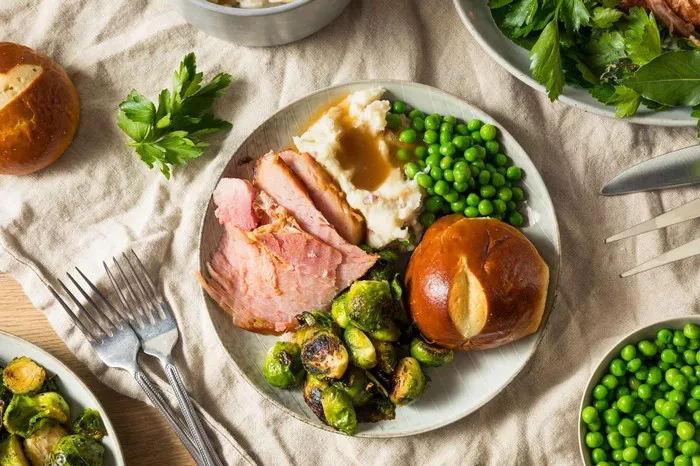Maintaining a healthy waistline is not just about aesthetics; it is a crucial aspect of overall well-being. A balanced diet plays a pivotal role in achieving and sustaining a healthy waistline. In this guide, we will delve into the principles of healthy eating to help you form and maintain a waistline that promotes optimal health.
Understanding the Basics
Before embarking on a journey to form a healthy waistline, it’s essential to understand the basics of nutrition. The body requires a combination of macronutrients (carbohydrates, proteins, and fats) and micronutrients (vitamins and minerals) to function optimally. Striking the right balance and making mindful food choices are key components of healthy eating.
Portion Control
One of the fundamental principles of healthy eating is controlling portion sizes. Consuming large portions, even of nutritious foods, can lead to an excess intake of calories. Use smaller plates to help regulate portion sizes, and listen to your body’s hunger and fullness cues. By being mindful of portion control, you can prevent overeating and promote a healthy waistline.
Choose Nutrient-Dense Foods
Opt for nutrient-dense foods that provide a high concentration of essential nutrients per calorie. These include fruits, vegetables, whole grains, lean proteins, and healthy fats. Nutrient-dense foods not only support overall health but also help manage weight by providing essential vitamins, minerals, and fiber without excess calories.
Include a Variety of Food Groups
A well-rounded diet includes a variety of food groups to ensure the intake of a broad spectrum of nutrients. Each food group contributes unique elements that are essential for maintaining health. Aim for a colorful plate with a mix of fruits, vegetables, whole grains, lean proteins, and healthy fats to cover all nutritional bases.
Hydrate Adequately
Proper hydration is often overlooked but is crucial for maintaining a healthy waistline. Water plays a vital role in digestion, nutrient absorption, and metabolism. Aim to drink at least eight glasses of water per day and limit the consumption of sugary beverages, which can contribute to excess calorie intake.
Strategic Eating Habits
In addition to understanding the basics of nutrition, adopting strategic eating habits can significantly contribute to the formation of a healthy waistline.
Mindful Eating
Practice mindful eating by paying full attention to the sensory experience of eating. Avoid distractions such as watching TV or using electronic devices during meals. Eating mindfully allows you to savor the flavors, textures, and smells of your food, making it easier to recognize satiety cues and prevent overeating.
Regular, Balanced Meals
Establishing a routine of regular, balanced meals helps regulate energy levels and prevents excessive hunger, which can lead to poor food choices. Aim for three main meals and incorporate healthy snacks if needed. Balancing meals with a combination of macronutrients provides sustained energy and keeps metabolism functioning optimally.
Don’t Skip Breakfast
Breakfast is often referred to as the most important meal of the day, and for good reason. A nutritious breakfast kickstarts metabolism stabilizes blood sugar levels and can help prevent overeating later in the day. Include a mix of protein, whole grains, and fruits or vegetables in your breakfast for a well-rounded start.
Healthy Choices for a Healthy Waistline
Making informed and health-conscious choices when selecting foods is crucial for achieving and maintaining a healthy waistline. Consider the following tips:
Opt for Whole Grains
Choose whole grains over refined grains to increase fiber intake and promote satiety. Whole grains such as quinoa, brown rice, and whole wheat provide essential nutrients and contribute to better weight management.
Prioritize Lean Proteins
Incorporate lean protein sources into your diet, such as poultry, fish, legumes, and tofu. Protein is essential for maintaining muscle mass, supporting metabolism, and promoting a feeling of fullness.
Include Healthy Fats
While moderation is key, including healthy fats in your diet is important for overall health. Sources of healthy fats include avocados, nuts, seeds, and olive oil. These fats contribute to satiety and support the absorption of fat-soluble vitamins.
Limit Added Sugars and Processed Foods
Excessive consumption of added sugars and processed foods is linked to weight gain and various health issues. Read food labels to identify hidden sugars and choose whole, minimally processed foods whenever possible.
Be Cautious with Liquid Calories
Be mindful of liquid calories from sugary beverages and alcohol, as they can contribute significantly to overall calorie intake. Opt for water, herbal teas, and other low-calorie beverages to stay hydrated without unnecessary added sugars.
Incorporating Physical Activity
While nutrition is a key factor in forming a healthy waistline, physical activity plays an equally important role. Engaging in regular exercise not only burns calories but also contributes to overall well-being.
Aim for a Balanced Exercise Routine
Incorporate a mix of aerobic exercises (such as walking, jogging, or cycling) and strength training into your routine. Cardiovascular exercises help burn calories, while strength training builds lean muscle mass, boosting metabolism.
Find Activities You Enjoy
Choose physical activities that you enjoy to make exercise a sustainable part of your lifestyle. Whether it’s dancing, hiking, or playing a sport, finding enjoyable activities increases the likelihood of sticking to a regular exercise routine.
Stay Active Throughout the Day
In addition to dedicated exercise sessions, incorporate more movement into your daily life. Take short breaks to stretch, use stairs instead of elevators, and consider activities like gardening or walking meetings to stay active.
Developing a Sustainable Lifestyle
Forming a healthy waistline is not about quick fixes or restrictive diets; it’s about cultivating sustainable lifestyle habits. Here are some tips for creating lasting change:
Set Realistic Goals
Establish achievable and realistic goals to avoid setting yourself up for disappointment. Gradual, sustainable changes are more likely to lead to long-term success than drastic, short-term measures.
Seek Support
Enlist the support of friends, family, or a professional when working towards a healthier lifestyle. Having a support system can provide encouragement, accountability, and valuable insights.
Practice Self-Compassion
Be kind to yourself throughout the journey. Understand that setbacks may occur, and it’s essential to approach challenges with self-compassion rather than self-criticism. Learn from experiences and use them as opportunities for growth.
Conclusion
Forming a healthy waistline is a holistic process that involves making informed food choices, adopting strategic eating habits, incorporating physical activity, and developing a sustainable lifestyle. By understanding the fundamentals of nutrition, practicing mindful eating, and prioritizing a well-rounded diet, you can achieve and maintain a waistline that not only looks good but also contributes to your overall health and well-being. Remember, it’s about making lasting changes that enhance your quality of life and promote a healthier, happier you.
























